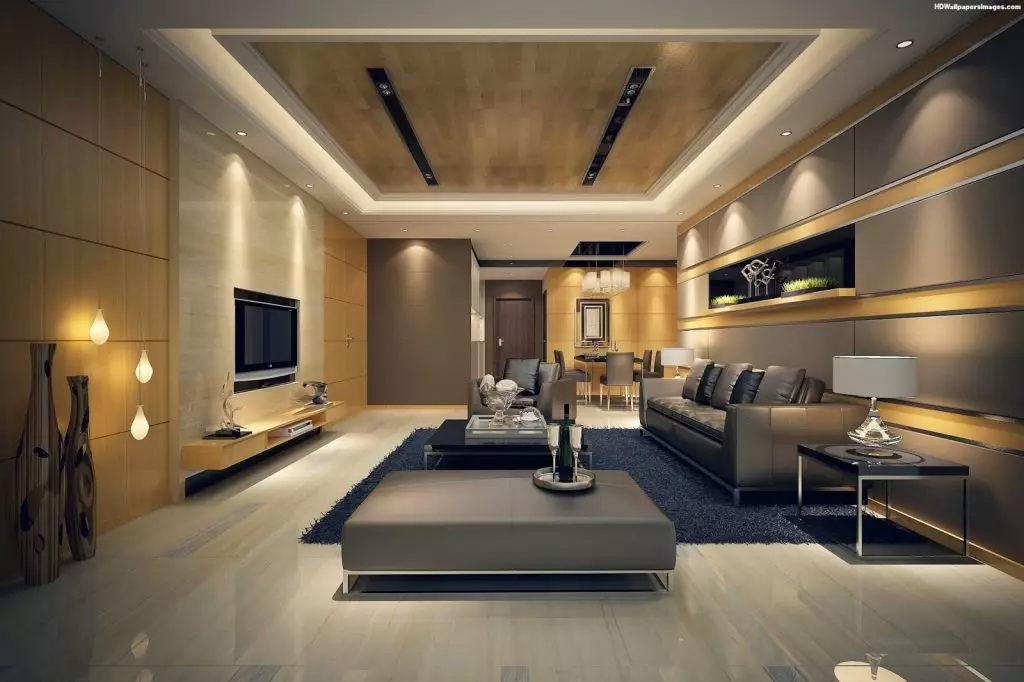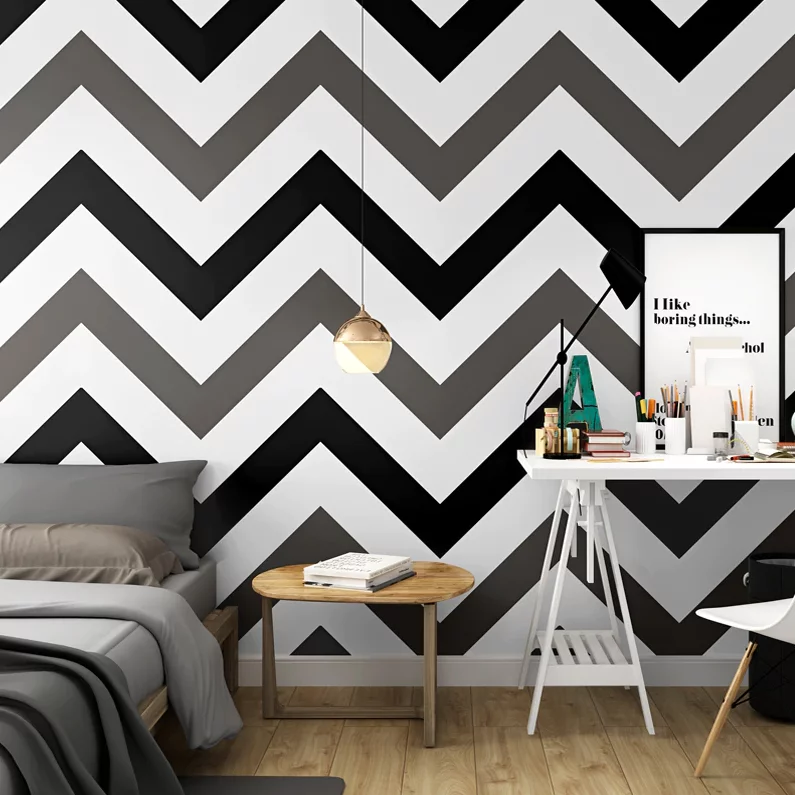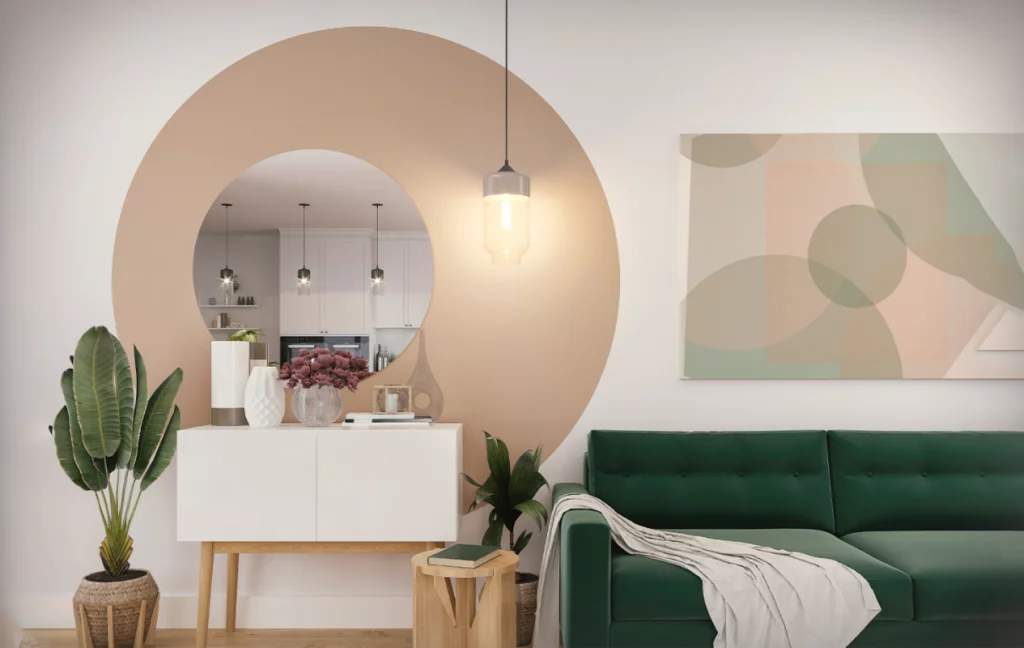Line is one of the fundamental concepts in interior design, and it significantly influences the visual experience of a room. Let’s delve into the various types of lines and their impact on interior design:

Straight lines exude an orderly quality; they are strong, solid, and evoke feelings of reassurance and calm. As a result, they are frequently the preferred choice for bedrooms and bathrooms

If you want to maximize the calming effect of straight lines, opt for horizontal lines. They enhance a sense of harmony. However, keep in mind that horizontal lines also make spaces appear wider. So, if you want to make a small or narrow space seem larger, consider using horizontal lines for wallpaper and furniture. You can also add wide shelving, framed photographs, artwork, and square or rectangular mirrors. Be cautious, though, if you have low ceilings (common in many cottages), as horizontal lines may make the ceiling seem even lower.

Did you know that there is a theory suggesting that our eyes find it unnatural to look at vertical lines compared to horizontal ones? However, don’t dismiss these unnatural processes—they serve a purpose! Our gaze naturally follows vertical lines upward, and they create the illusion of increased height for walls, ceilings, and windows.
During the Regency period, vertical stripes were favored, making Georgian rooms appear even more spacious. The effect was enhanced by soaring sash or full-length windows. Now, if we consider a low-ceilinged cottage, incorporating vertical lines—such as full-length curtains and tapering floor lamps—can subtly elevate the perceived height of the ceiling.

“Diagonal lines always evoke a sense of surprise, whether they appear on the floor, walls, or furnishings. They are particularly effective if you want to infuse a room with energy.
In busy and active spaces—such as kitchens, sitting rooms, or children’s dens—diagonal lines truly shine. Take a moment to observe how designer Amechi Mandi skillfully employs diagonal lines and geometric shapes for a powerful effect.
However, like in life, too much of a good thing can sometimes become overwhelming. Therefore, use diagonal lines judiciously to maximize their impact.
During the Regency period, vertical stripes were favored, making Georgian rooms appear even more spacious. The effect was enhanced by soaring sash or full-length windows. Now, if we consider a low-ceilinged cottage, incorporating vertical lines—such as full-length curtains and tapering floor lamps—can subtly elevate the perceived height of the ceiling.

Zigzag lines, also known as chevrons, add a lively touch to any space. With their sharp edges and youthful vibe, it’s no wonder they were highly popular in the 1960s, often appearing on furniture, wallpaper, and floor coverings. Children especially adore them, making zigzags a fantastic choice for bedrooms and playrooms. However, like diagonal lines, exercise caution—too many zigzags, especially in a small area, can become overwhelming and even induce headaches.
In busy and active spaces—such as kitchens, sitting rooms, or children’s dens—diagonal lines truly shine. Take a moment to observe how designer Amechi Mandi skillfully employs diagonal lines and geometric shapes for a powerful effect.
However, like in life, too much of a good thing can sometimes become overwhelming. Therefore, use diagonal lines judiciously to maximize their impact.
During the Regency period, vertical stripes were favored, making Georgian rooms appear even more spacious. The effect was enhanced by soaring sash or full-length windows. Now, if we consider a low-ceilinged cottage, incorporating vertical lines—such as full-length curtains and tapering floor lamps—can subtly elevate the perceived height of the ceiling.

One effective way to soften the impact of zigzags and diagonals, while also harmonizing the influence of straight lines, is to incorporate circles into a room. You can achieve this by adding circular elements like rugs, cushions, patterned textiles, or wallpaper. Consider circular accessories such as vases or mirrors, and pay special attention to lamps, shades, and light fittings with circular designs.

Similar to circular lines, curved lines evoke a sense of softness and gentle movement. Imagine spirals or staircases—houses with half-landings earn extra points for incorporating curved lines. Spiral-patterned wallpaper can also introduce curved lines to a space; this subtle movement offsets any rigidity caused by straight lines.
Moreover, curved lines have the magical ability to make cramped or narrow spaces appear larger. Consider introducing them into hallways, landings, or box rooms.
In busy and active spaces—such as kitchens, sitting rooms, or children’s dens—diagonal lines truly shine. Take a moment to observe how designer Amechi Mandi skillfully employs diagonal lines and geometric shapes for a powerful effect.
However, like in life, too much of a good thing can sometimes become overwhelming. Therefore, use diagonal lines judiciously to maximize their impact.
During the Regency period, vertical stripes were favored, making Georgian rooms appear even more spacious. The effect was enhanced by soaring sash or full-length windows. Now, if we consider a low-ceilinged cottage, incorporating vertical lines—such as full-length curtains and tapering floor lamps—can subtly elevate the perceived height of the ceiling.

لورم ایپسوم متن ساختگی با تولید سادگی نامفهوم از صنعت چاپ و با استفاده از طراحان گرافیک است چاپگرها و متون بلکه روزنامه و مجله در ستون و سطرآنچنان که لازم است